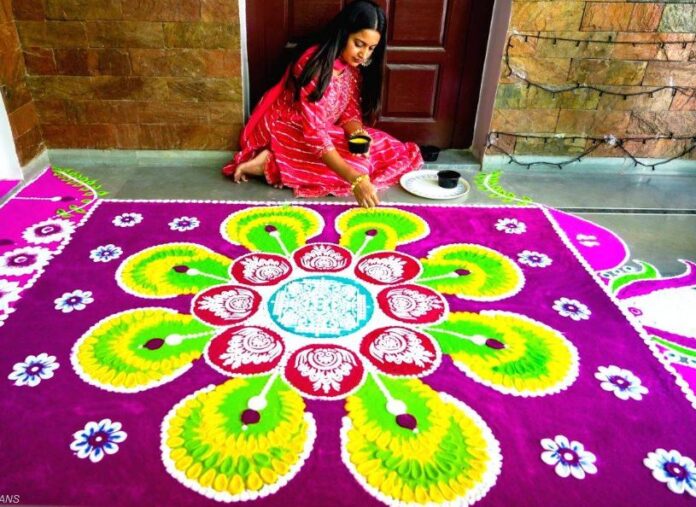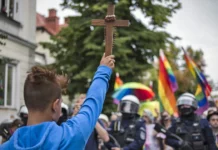Sunil Kumar D
Deepavali or Diwali is known as the “Festival of Lights” is a Sanatan festival widely celebrated by Hindus, Jains, Sikhs, Buddhists, and people of Indian heritage and non-Indian heritage in Bharat, in South Asia, and by all the Sanatan Diaspora across the world. The word ‘Deepavali’ derives from Sanskrit word and means “row of lights.” Diwali celebrations include grand decoration of houses, temples, community centers, and business places, Lakshmi Puja, the illumination of lights, and diya (clay lamps), lots of
firecrackers to symbolize the victory of good over evil, inner light over spiritual darkness, hope over despair, and knowledge over ignorance. Diwali is a time for gathering with loved ones, celebrating life with sweet diets, gifts, apparels, prayers and other such beautiful traditions, and committing to making the right decisions in life. For most business communities, Diwali coincides with the Sanatana New Year.
When is the Deepavali in 2023?
As per the Sanatana Lunar Calendar, the festival of Diwali falls on Kartik Amavasya or the new moon of Kartik month that falls between around mid-September and mid-November. In India, especially northern states, Diwali is a five-day long celebration that commences with Dhanteras on November 10, 2023 Friday and ends with Bhai Dooj on November 14, 2023 Tuesday. Lakshmi Puja, one of the most auspicious festival days is celebrated as the day of Diwali on 12, 2023 Sunday.
What are the legends behind Diwali and its moral value?
Diwali is connected to various deities, great personalities and religious events, such as being widely associated with Lakshmi Puja, the goddess of prosperity and Ganesha, the god of wisdom and the remover of obstacles. On Diwali day, Rama returned to his kingdom in Ayodhya with his wife Sita and his brother Lakshmana after defeating the demon king Ravana. Another Diwali story in Sanatan mythology is that Diwali marks the day Lord Krishna defeated the demon Narakasura and freed the people of his kingdom. After he slayed the demon, Lord Krishna declared it a day of festivities.
While the Sanatanis of Eastern India and Bangladesh generally celebrate Diwali by worshipping the Goddess Kali. Jains observe Diwali as day that marked the final liberation of Mahavira and Sikhs celebrate as the release of Guru Hargobind from a Mughal prison. Buddhists celebrate Diwali as Ashok Vijayadashami, the day when Emperor Ashoka converted to Buddhism and followed a path of peace,
What is the history of Diwali?
Deepavali is mentioned in early Sanskrit inscriptions in stone, copper, and texts, such as the Padma Purana and the Skanda Purana, Numerous travelers and historians from outside Bharat, mentioned Deepavali as the great festival at night, in honor of Lakshmi, with illuminations on trees and houses.
How is Diwali Celebrated?
Diwali is celebrated over five days with each day holding a special significance with some regional variations.
Day 1: Dhanteras: Dhanteras, derived from Dhan meaning wealth and teras meaning thirteenth, marks the thirteenth day of the dark fortnight of Ashwin or Kartik and the beginning of Diwali in most parts of India. On this day, celebrants clean, renovate, decorate, and illuminate the interior and exterior of their homes and work/business places with Diyas (oil lamps) and Rangolis (colorful floor art patterns). During Diwali, people wear their finest clothes, perform worship ceremonies of Lakshmi, light fireworks, and partake in family feasts, where Mithai (sweets) and gifts are shared.
Day 2: Naraka Chaturdashi, Kali Chaudas, Chhoti Diwali, Hanuman Puja, Roop Chaudas, Yama Deepam: The term Chhoti; means little, while &Naraka means hell and Chaturdashi means fourteenth. The day and its rituals are interpreted as ways to liberate any souls from their suffering in & Naraka, or hell, as well as a reminder of spiritual auspiciousness. On this day, the destruction of the asura (demon) Narakasura by Krishna happened, hence girls and women do Arati to the male members of their family very early in the morning. Hanuman Puja is observed in some parts of Gujarat and other places to seek protection from HIM as the spirits roam around on the night of Kali Chaudas. Some observe Yama Deepam (Yama Dipadana or Jam ke Diya) a diya that is filled with sesame oil is lit at back of their homes facing in the southern direction. This is believed to please Yama, the god of death, and to ward off premature death.
Day 3: Diwali: People dress in new clothes, welcome Goddess Lakshmi and Lord Ganesh into their cleaned homes and work/business places, and perform their puja to bring prosperity and happiness for the coming year. They light Diyas around the house, and other places and keep all the lights on, eat delicious food and sweets, and enjoy fireworks celebrations with family and friends.
Diwali Lakshmi Puja is done not only in families but also in offices and is the significant day for the most traditional businessmen. On this day, ink bottle, pens and new account books are worshipped. Ink bottle and pen, which are called Davat and Lekhani respectively, are sanctified by worshipping Goddess Maha Kali on them. New account books, which are called Bahi-Khate, are sanctified by worshipping Goddess Saraswati on them. The most auspicious day and time to do Diwali Puja is when Amavasya Tithi prevails during Pradosh (after sunset).
Day 4: Annakut, Gudi Padwa/Govardhan Puja: Govardhan Puja is also known as Annakut or Annakoot (meaning a “mountain of food”), in which devotees' worship Govardhan Parvat (a hill) and offer 56 varieties (Chappan Bhog) of vegetarian food and sweets to Lord Krishna as a mark of gratitude.
This day also ritually celebrates the bond between the wife and husband wherein husbands give gifts to their wives. In other regions, parents invite a newly married daughter, or son, together with their spouses to a festive meal and give them gifts. People exchanging gifts, sweets, and best wishes.
Day 5: Bhai Duj (brother's day), Bhai Bheej/ Bhai Tilak or Bhai Phonta: It celebrates the sister-brother bond, similar in spirit to Raksha Bandhan. This festive day is interpreted by some to symbolize Yama's sister Yamuna welcoming Yama with a Tilak, while others interpret it as the arrival of Krishna at his sister Subhadra's place after defeating Narakasura. Subhadra welcomes him with a Tilaka on his forehead. On this day the womenfolk of the family perform a puja with prayers for the wellbeing of their brothers, then return to a ritual of feeding their brothers with their hands and receiving gifts.
What is the religious, economic, and political significance of Deepavali?
Mythical tales shared on Diwali vary widely depending on region and tradition, yet all share a common focus on righteousness, self-inquiry and the importance of knowledge. Deepavali symbolizes the victory of good over evil, knowledge and good over ignorance and evil. Trade and merchant families and others also offer prayers to Ma Saraswati, who embodies music, literature and learning and Kubera, who symbolizes book-keeping, treasury and wealth management. For merchant communities Diwali signifies the start of a new year. In short, Deepavali festival is the path to overcoming the & darkness of ignorance . The telling of these myths are reminiscent of the Sanatana belief that good ultimately triumphs over evil.
Deepavali marks a major shopping period in Bharat. People spend a significant portion of their annual income, and both farmers and consumers renew their relationships and social networks as well. Deepavali sales over 1.25 trillion are spread across the organized and unorganized sectors. Many political parties/governments encourage or sponsor Diwali-related festivities and organizes many cultural events during Diwali every year in their countries. Deepavali illuminates the country with its brilliance and dazzles people with its joyous celebration.







